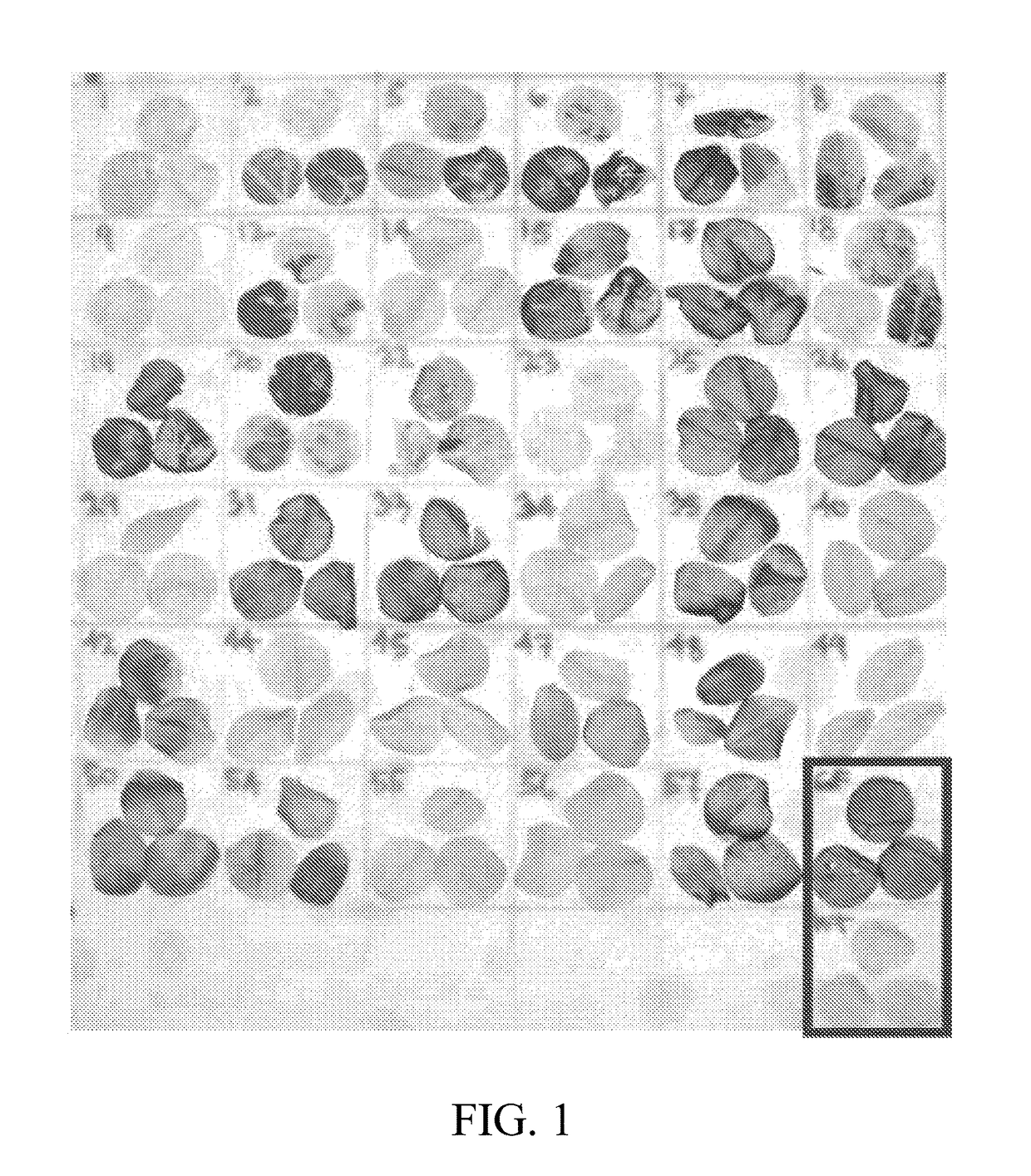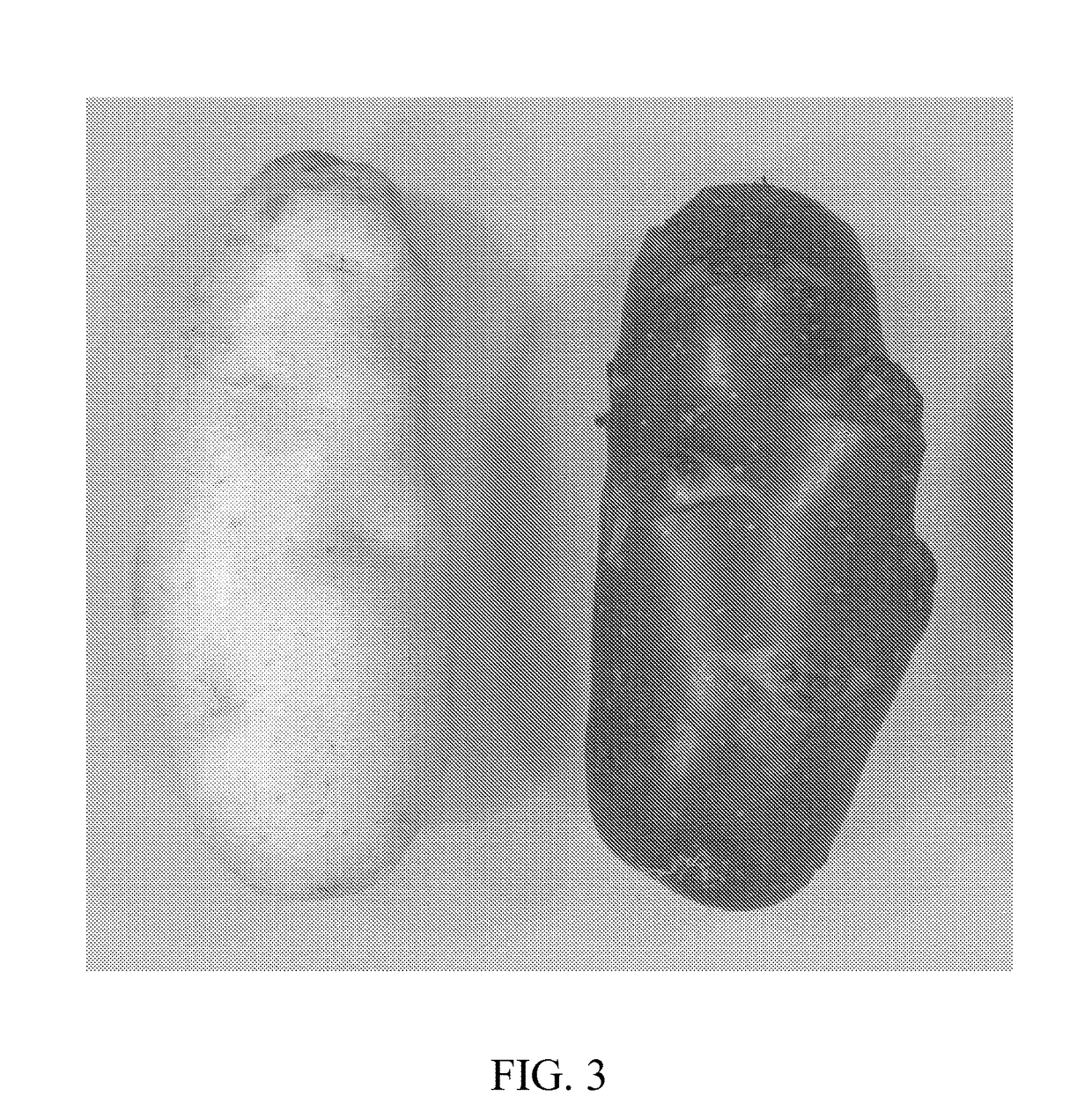Protein production in transgenic potato plants having suppressed expression of patatin and CD4B
a technology of transgenic potato plants and protein production, which is applied in the field of protein synthesis in plant cells, can solve the problems of high cost and laborious maintenance of cell culture systems
- Summary
- Abstract
- Description
- Claims
- Application Information
AI Technical Summary
Problems solved by technology
Method used
Image
Examples
example 1
Targeted Expression of GFP
[0197]Two constructs were created to compare GFP expression in potato using the EGFP gene fused to the signal peptide of GBSS (FIG. 21 and SEQ ID NO:8) or fused to the signal peptide of RuBisCo (FIG. 22 and SEQ ID NO:9). A control vector pSIM1949 (FIG. 20) was made using the EGFP gene without signal peptide as a control. Transgenic shoots growing in vitro strongly expressing GFP were selected using fluorescence microscopy. Extremely strong GFP expression was detected in the leaves of transgenic pSIM1947 plantlets, while GFP expression in pSIM1948 plantlets was slightly stronger than that of the control construct carrying the EGFP gene without signal peptide, as shown in FIG. 23. These results indicate that concomitant protein over-expression with the GBSS transit peptide and AGP silencing by convergent promoters are effective in enhancing recombinant protein production.
example 2
Silencing of the Patatin PATB1 Gene
[0198]Applicants have also devised nucleic acid constructs that suppress expression of the patatin gene using primers designed from the nucleotide sequence of the patatin PATB 1 gene (SEQ ID NO:3 and SEQ ID NO:4). The pSIM1934 plasmid (FIG. 14) was constructed with the goal of silencing the Solanum tuberosum patatin gene in a tuber-specific manner. Thirty transgenic lines were generated from parent material overexpressing GFP (SEQ ID NO:7) that was originally transformed with the pSIM1903 vector (FIG. 9). None of the pSIM1934 experimental lines showed increased GFP expression in tubers (FIG. 15). Further, SDS-PAGE and Western blotting analysis demonstrated that the majority of patatin proteins (approximately 40 kDa bands) were eliminated by silencing in 10 experimental lines (FIG. 16).
example 3
Silencing of the CD4B Protease Gene
[0199]Applicants have devised nucleic acid constructs that suppress expression of CD4B (ATP-dependent protease ATP-binding subunit clpA homolog) using CD4B specific region of cDNA sequence PGSC0003DMG402014476 in the Potato Genome Sequencing Consortium Public Data (SEQ ID NO:5 and SEQ ID NO:6). The pSIM1939 plasmid (FIG. 17) was constructed with the goal of silencing the Solanum tuberosum CD4B gene in a tuber-specific manner. Twenty-six transgenic lines were generated from parent material overexpressing GFP (SEQ ID NO:7) that was originally transformed with the pSIM1903 vector (FIG. 9). When analyzed for GFP accumulation in the tuber, seven transgenic lines showed a 2-3-fold increase in GFP accumulation as compared to the parent line (pSIM1903). (FIG. 18). To confirm silencing of the CD4B gene, Northern blotting analysis of the seven transgenic lines that showed a 2-3-fold increase in GFP accumulation as compared to the parent line (pSIM1903) was p...
PUM
| Property | Measurement | Unit |
|---|---|---|
| temperature | aaaaa | aaaaa |
| temperature | aaaaa | aaaaa |
| speeds | aaaaa | aaaaa |
Abstract
Description
Claims
Application Information
 Login to view more
Login to view more - R&D Engineer
- R&D Manager
- IP Professional
- Industry Leading Data Capabilities
- Powerful AI technology
- Patent DNA Extraction
Browse by: Latest US Patents, China's latest patents, Technical Efficacy Thesaurus, Application Domain, Technology Topic.
© 2024 PatSnap. All rights reserved.Legal|Privacy policy|Modern Slavery Act Transparency Statement|Sitemap



